December 2023
Posted: 12/19/2023 12:59:41 PM
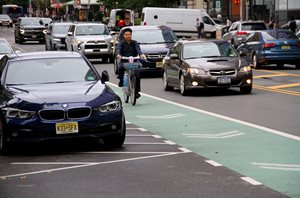 Thirty-eight million Americans rode e-bikes last year and one million e-bikes were sold in the U.S. in 2022. Will 2023 be the year that e-bikes make the jump to mainstream?
Thirty-eight million Americans rode e-bikes last year and one million e-bikes were sold in the U.S. in 2022. Will 2023 be the year that e-bikes make the jump to mainstream?
A trio of panelists tried to answer that question during a webinar, “E-bikes in New Jersey: Exploring Programs and Incentives for Micromobility.” The NJTPA sponsored the webinar as part of its Together North Jersey Initiative with the Voorhees Transportation Center (VTC) at Rutgers University.
The panelists were John MacArthur, Sustainable Transportation Program Manager at the Transportation Research and Education Center (TREC) at Portland State University, Luke Jones, professor of economics at Valdosta State University, and Ash Lovell, Ph.D., electric bicycle policy & campaign director with People for Bikes.
There is growing research that shows that e-bikes are getting more people biking, and not just for recreation but replacing vehicle miles traveled (VMT), MacArthur said.
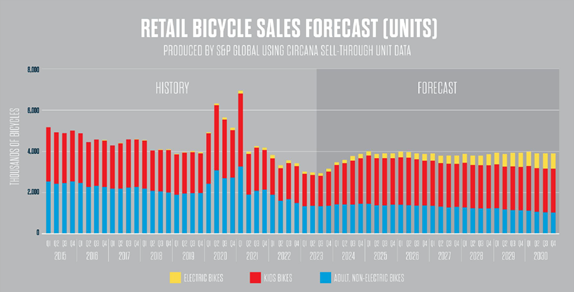 E-bikes allow riders to ride longer with less effort, obviously making hills much easier, and are less expensive than cars or motorcycles, said Jacob Thompson of VTC, who moderated the discussion. E-bikes, however, are more expensive and have higher maintenance costs than a regular bike and are heavier, as much as 50 pounds or more. Recent fires in the news that may have started as a result of e-bikes' lithium-ion batteries likely were the result of faulty batteries, overcharging, and not being stored properly, Thompson said.
E-bikes allow riders to ride longer with less effort, obviously making hills much easier, and are less expensive than cars or motorcycles, said Jacob Thompson of VTC, who moderated the discussion. E-bikes, however, are more expensive and have higher maintenance costs than a regular bike and are heavier, as much as 50 pounds or more. Recent fires in the news that may have started as a result of e-bikes' lithium-ion batteries likely were the result of faulty batteries, overcharging, and not being stored properly, Thompson said.
The benefits of e-bikes have led many local and state governments to offer incentives for their purchase and use. Ten states have active incentive programs either at the local or state level; in California, a program is expected to roll out statewide in early 2024.
Denver’s incentive program, where some 7,000 vouchers have been redeemed, is often used as a model. Incentives have been reduced (from a general incentive of $400 to $300 and cargo e-bikes from $500 to $200), but adaptive e-bikes have been added to the program, at $1,400, and a low-income subsidy remains at $1,200.
Among key findings in his research, Jones found that point-of-purchase discounts are more effective than mail-in rebates and tax credits and right-sizing incentive amounts to available budget increases program effectiveness. “A lot of programs set incentives too high at first,” he said, which hurts effectiveness if the budget runs out quickly.
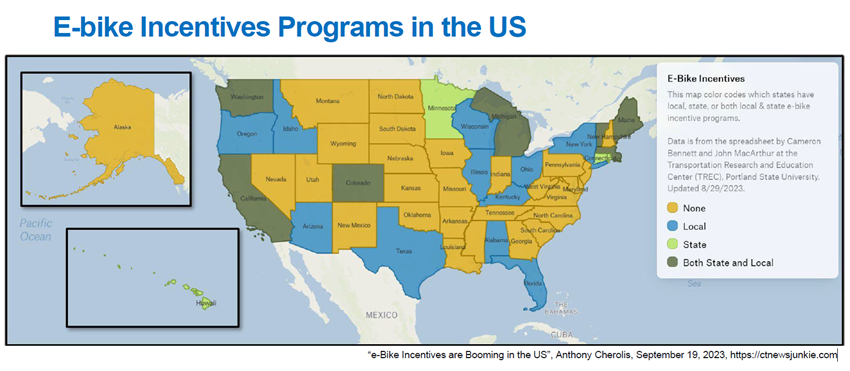
Lowell stressed the importance of how easily customers can have their e-bike serviced after purchase. For that reason, good relationships with local dealers who can fix problems are key. “If it’s really going to be a car replacement option, you need that good relationship,” she said.
People for Bikes offers resources for safe riding through its online E-bike Smart Guide of five modules, including one entirely about batteries, charging, and what is a safe and certified battery.
There are lots of different ways to fund incentive programs, Lowell said, with many based on objectives related to climate plans. For instance, Denver had a climate initiative ballot question and California is using its greenhouse gas reduction funds. Towns can also partner with utilities doing their own programs, she added.
“It’s harder when you have statewide programs, but at the municipal level, you can work with communities,” MacArthur said, noting Corvalis, Oregon started with a small incentive that sparked a dialogue around cycling in general. Panelists also empasized prioritizing dedicated outreach and incentives for low-income residents.
A recording of the webinar is available here.
Posted: 12/15/2023 11:07:41 AM
Download a full size calendar here.
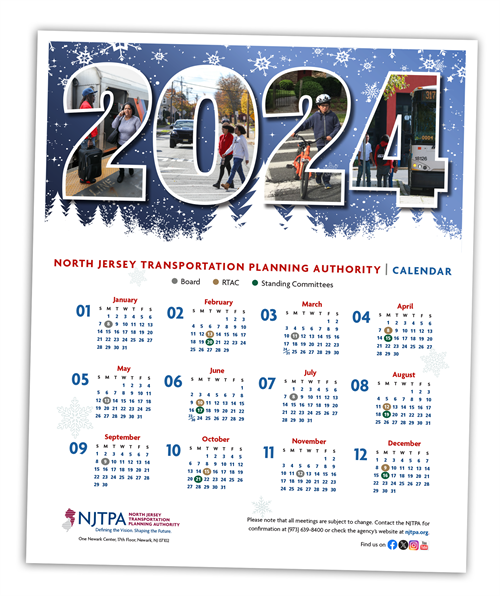
Posted: 12/6/2023 8:23:52 AM
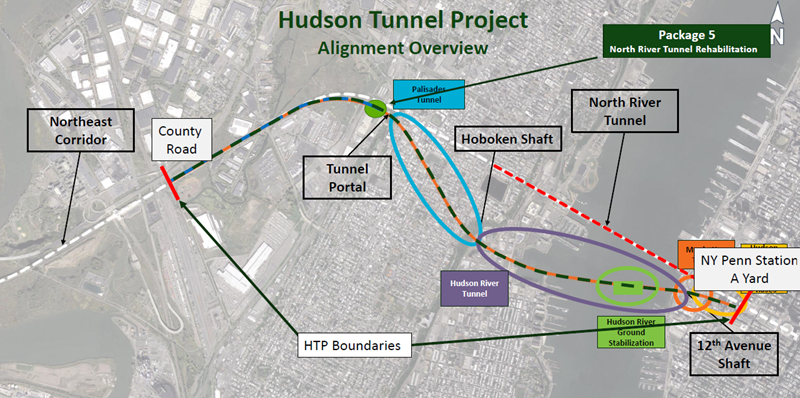
Progress on the new Hudson River tunnel, a study of a new multiuse path along the west side of the river and work on climate action plans were topics of presentations at the annual meeting of the Metropolitan Area Planning (MAP) Forum on December 1. The NJTPA hosted the meeting of the MAP Forum, a consortium of 10 metropolitan planning organizations and councils of government in Connecticut, New Jersey, New York, and Pennsylvania.
Paola Cala-Ortiz, policy advisor to Gateway Development Commission (GDC), presented an update on the Gateway Program, which includes a new two-track Hudson River tunnel and other rail improvements between New York Penn Station and Newark Penn Station. It is the most congested section of the 457-mile stretch of the Northeast Corridor (NEC) from Boston to Washington, D.C., she said. Some 450 trains and 200,000 trips daily are constrained by a two-track bottleneck at the existing Hudson River tunnel. “The Northeast Corridor is really an economic engine for the whole of the country,” Cala-Ortiz said. It encompasses 7 million jobs within 5 miles along its length.
The bistate, single-purpose GDC is developing the $16-billion project through a partnership among New Jersey, New York, and Amtrak to realize “resiliency, reliability, and redundancy” in the rail corridor, said Carla-Ortiz.
Phase 1 involves construction of a new two-track tunnel under the Hudson River along with rehabilitation of the existing two-track North River Tunnel, which is more than a century old. It will also include completion of a concrete casing on the west side of Manhattan to preserve the right-of-way for the tunnel into Penn Station and a new bridge on Tonnelle Avenue in New Jersey over the tunnel portal.
Meanwhile, NJ TRANSIT will replace the century-old Portal North Bridge, a two-track moveable swing-span bridge, with a higher bridge that will not have to open and close for traffic along the Hackensack River.
The Hudson Tunnel Project has received or had approved up to $11 billion in federal funding, a 70/30 funding split between the federal government and local partners, according to Cala-Ortiz.
Two other presentations during the meeting focused on bicycle and pedestrian access to the George Washington Bridge (GWB).
Jay Shuffield, manager of regional transportation policy at the Port Authority of New York and New Jersey, reviewed bicycle and pedestrian improvements at the GWB, including rest areas, viewing platforms, entry platforms, and ramps replacing stairs.
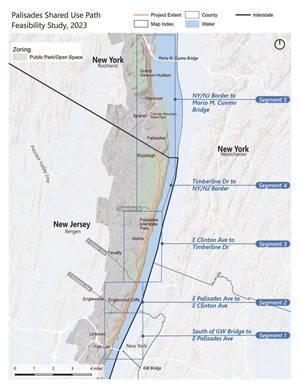 The New York Metropolitan Transportation Council (NYMTC) is studying creating a 20-mile shared use path along the west bank of the Hudson River to accommodate increased bicycle traffic from the recent improvements to the GWB and a shared used path across the Mario Cuomo Bridge, formerly the Tappan Zee.
The New York Metropolitan Transportation Council (NYMTC) is studying creating a 20-mile shared use path along the west bank of the Hudson River to accommodate increased bicycle traffic from the recent improvements to the GWB and a shared used path across the Mario Cuomo Bridge, formerly the Tappan Zee.
U.S. Route 9W has always been a significant bike route despite not having sufficient facilities for cyclists, said John Simpson, mobility coordinator at NYMTC. Many use the route to get from the GWB through parks on the west side of the Hudson as far north as Bear Mountain State Park.
The study is anticipated to be completed in winter 2025. Community workshops are being planned for the coming months, followed by public review of the draft report expected next fall. It will determine the feasibility of a path and a potential preferred alignment. That would set the stage for later construction and implementation, Simpson said.
NYMTC and the NJTPA are also partnering on the creation of a Priority Climate Action Plan. This effort is being spearheaded by the New York City Mayor’s Office of Climate and Environmental Justice, with funding from the federal Environmental Protection Agency.
This is one of four such efforts underway in the MAP Forum Region, with three others in Connecticut and one in Eastern Pennsylvania. The plans include greenhouse gas inventories and enable the region to seek funding to implement reduction measures.
A complete recording of the MAP Forum annual meeting is available here.